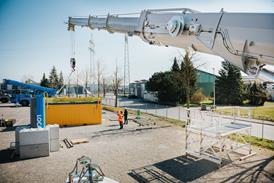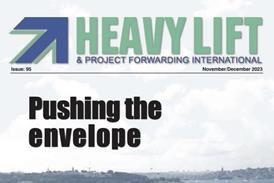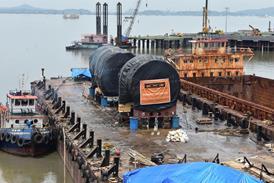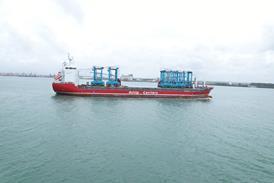Analysis of 96 European ports has revealed that only a few ports are capable of accommodating the quayside manufacturing and assembly required for building and operating large-scale floating offshore wind farms, says LOC Renewables.
As part of the Floating Wind Joint Industry Report, LOC, WavEC and Cathie Associates examined the logistical challenges relating to floating wind farms. Published on behalf of the Carbon Trust, LOC says the development of the sector will be held up by the limitations of current port infrastructure.
With significant growth potential, floating offshore wind farms will enable development in high-wind zones where the sea is too deep for fixed foundations. Currently the largest floating offshore wind project has a capacity of 30 MW, but organised infrastructure planning will be vital to accommodate vastly bigger projects and allow the floating offshore wind industry to reach commercial viability, says LOC.
In order to accommodate the quayside construction of a large-scale floating wind farm, a port must meet various criteria. According to LOC, the port will require a suitably large onshore area for component set-down and production lines as well as an area for wet storage of assembled units. The port should also be close to other operation-capable ports.
LOC’s research revealed that existing port infrastructure is largely insufficient: of 96 European ports analysed, only a few in Scotland, Norway and Spain were suitable for the development and operation of floating offshore wind farms.
According to LOC, without a plan to develop a network of appropriate ports, the lack of suitable infrastructure for commercial floating offshore wind farms will mean projects will suffer from increased costs and longer operational lead times.
In terms of vessels and equipment, the report further concluded that current installation and support vessels used for fixed foundation wind farms are likely to prove insufficient, and new ones will need to be developed to meet the demands of floating offshore projects. In particular, if construction is to be carried out offshore, the industry will need to invest in new vessels with greater lifting capacity.
“By highlighting the infrastructure challenges facing floating wind (farms) we are enabling them to be tackled head-on,” said Dr RV Ahilan, joint ceo of LOC Group.
“As the industry develops the necessary technologies to make floating offshore wind commercially viable, there is an urgent need for investment in port infrastructure to avoid delays in the deployment of large-scale floating offshore wind farms.”















